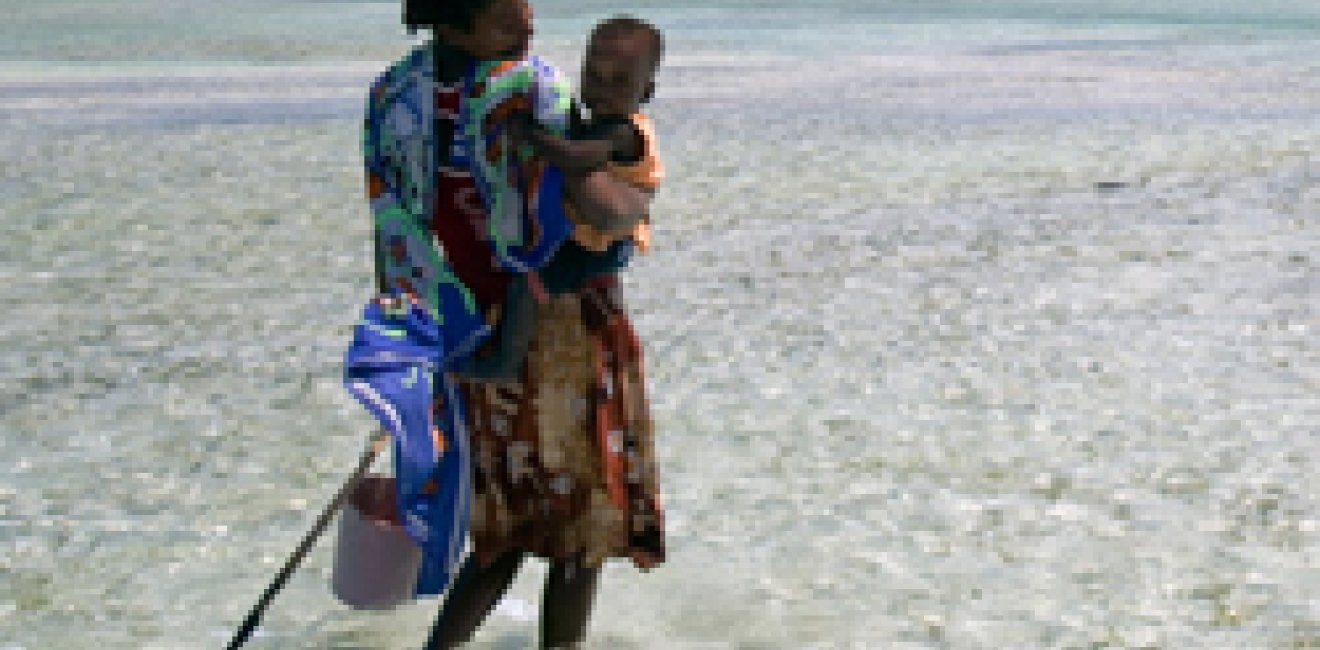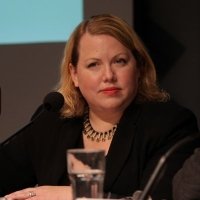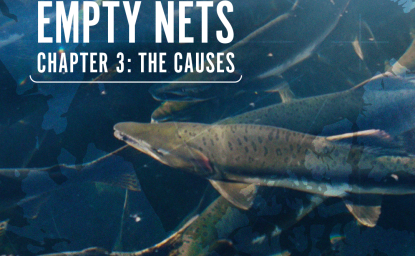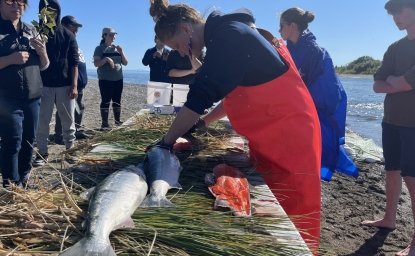Helping Hands: An Integrated Approach
From the June 2011, Centerpoint cover story: Many who research, and work on, population-health-environment (PHE) issues are increasingly advocating integrated solutions.
From the June 2011, Centerpoint cover story: Many who research, and work on, population-health-environment (PHE) issues are increasingly advocating integrated solutions.

At the moment, the agendas of the growing population of people and the environment are too separate. People are thinking about one or the other," said Sir John Sulston, Nobel laureate and chair of the Institute for Science, Ethics, and Innovation at the University of Manchester, in an interview with the Environmental Change & Security Program(ECSP).
"People argue about, ‘Should we consume less or should we have fewer people?' The point is it's both. We need to draw it together. It's people and their activities."
Many who research, and work on, population-health-environment (PHE) issues are increasingly advocating integrated solutions. Such issues as population growth, natural resource management, and food security, are interrelated challenges that, if addressed concurrently, likely will yield better results and community trust.
With this notion in mind, ECSP launched the 5-year HELPS (Health, Environment, Livelihoods, Population, and Security) project in October 2010. The Project focuses on integrated PHE programs and demographic security linkages. HELPS also looks at population's links to global environmental priorities, media coverage of population, and related issues like gender, youth, and equity.
Funded by USAID's Office of Population and Reproductive Health through its IDEA (Informing Decision-makers to Act) grant, the HELPS project builds on ECSP's 14-year history of exploring nontraditional security issues.
Population-Environment Connection
A February event in the HELPS series featured Sir John Sulston, who said dialogue between population and environmental communities has received renewed attention and is reappearing on national agendas.
The Royal Society's "People and the Planet" study, which will be completed by early 2012, will "provide policy guidance to decision-makers as far as possible" and aims to facilitate dialogue, he said. The HELPS Project is helping the Working Group gather evidence of population-environment connections and to identify solutions.
"What we should be aiming to do is to ensure that every individual on the planet can come to enjoy the same high quality of life whilst living within the Earth's natural limits," said Sulston. People are happier, healthier, and wealthier than ever before, according to human development indexes. But, Sulston said, 200 million women worldwide have an unmet need for family planning, ecosystems are degraded, biodiversity has decreased, and there are widespread shortages of food and water.
"Many times we tackle different development challenges through single sector programs: health programs, agriculture programs, water programs. Those single sector approaches can make sense," said ECSP Director Geoff Dabelko on the Wilson Center's dialogue television program. "But, of course, poor people are facing all those life and death challenges at once. We have to find ways to help them meet those challenges together in an integrated fashion."
On the same program, Roger-Mark De Souza, vice president for research and director of the Climate Program for Population Action International, said the drive for integrated development stems from the communities being served, not necessarily from outside aid groups. "We've seen that there's a greater impact because there's longer sustainability for those efforts that have an integrated approach," he said. "There's a greater understanding and a greater appreciation of the value that [PHE] projects bring."
At an April 7 ECSP event, De Souza said rural communities in developing countries understand that high population growth rates, poor health, and environmental degradation are connected. An integrated approach to development, he said, is a "cost-effective intervention that we can do very easily, that responds to community needs that will have a huge impact that's felt within a short period of time."
Proponents of integrated development face significant barriers, but the tide may be turning. To fully harness this momentum, former ECSP Senior Program Associate Gib Clarke argues in his FOCUS brief, "Helping Hands: A Livelihood Approach to Population, Health, and Environment Programs," that the PHE community must solidify its research base, reach out to new partners, and push for flexible funding and programming. He suggested changing the name PHE to HELP- Health, Environment, Livelihoods, and Population. By adding livelihoods, the glue that binds population, health, and the environment, he said, the HELP moniker might broaden its appeal to new donors and practitioners.
Case Study: Madagascar
In Madagascar, a key country for integrated PHE programs, "today's challenges are even greater than those faced 25 years ago," said Lisa Gaylord, director of program development at the Wildlife Conservation Society, at a March 28 Wilson Center event. As the country's political situation has deteriorated since 2009, the United States and other donors pulled most funding, and some PHE programs were forced to discontinue environmental efforts.
But other PHE programs are expanding: Based in southwestern Madagascar, the Blue Ventures program began as an ecotourism outfit, said Program Coordinator Matt Erdman, but has since grown to incorporate marine conservation, family planning, and alternative livelihoods. A major challenge is its rapidly growing population, which threatens the residents' health and food security, as well as the natural resources on which they depend. More than half the island's population is younger than 15, and the infant and maternal mortality rates are high, Erdman said.
In response, Blue Ventures set up a family planning program. The program uses a combination of clinics, peer educators, theater presentations, and sporting events, such as soccer tournaments, to spread information about health and family planning. The HELPS Project will soon publish a Focus brief on Blue Ventures' family planning efforts, titled: "To Live with the Sea."
Erdman said, "If you have good health, and family size is based on quality, families can be smaller and [there will be] less demand for natural resources, leading to a healthier environment."
Demographic Security
A country's age structure can pose a challenge, said Jennifer Dabbs Sciubba, the Mellon Environmental Fellow with the Department of International Studies at Rhodes College, at a March 14 Wilson Center event. Countries with a large percentage of people younger than 30 "are [much] more likely to experience civil conflict than states with more mature age structures."
Tunisia's recent revolution, Sciubba said, could be understood as a "story about demography." Countries with transitional age structures, such as India, Brazil, and South Africa, face different security challenges. With a majority of their populations between 15 and 60 years old, more people are contributing to the economy than are taking away, which could bolster these countries economically and politically. Global institutions will have to reform and include these countries, she advised, "or else become irrelevant."
"Understanding population is critical to our success in being able to prevent conflict, and also managing conflict and crises once we're involved," said Kathleen Hicks, Deputy Undersecretary at the Department of Defense (DOD). However, the DOD does not "treat demographics as destiny," she said, but instead as "one of several key trends, the complex interplay of which may spark or exacerbate future conflicts."
Demography can also help predict political trends. In 2008, demographer Richard Cincotta predicted that between 2010 and 2020 the states along the northern rim of Africa—Morocco, Algeria, Tunisia, Libya, and Egypt—would each reach a demographically measurable point where the presence of at least one liberal democracy among the five would be probable. Recent months have brought possible first steps to validate that prediction.
Mathew Burrows, counselor at the National Intelligence Council, said Cincotta's work demonstrates that "the demographic tool is essential" to analysts and policymakers. "There is a real appetite among policymakers" for understanding demography, he said, because it gives them more structure than political science narratives.
Yemen is another example of this trend. In March, tens of thousands of youth-led demonstrators demanded that their president resign. While numerous factors have sparked the "Arab Spring," one driving force is Yemen's dire demographic and environmental situation. Some experts say Yemen may be the first country to run out of groundwater. The average Yemeni woman has more than five children, and 45 percent of its population is below age 15. On May 18, Yemeni and international experts discussed these issues at the Wilson Center. Upcoming HELPS events include daylong conferences on Afghanistan and Nigeria.
There are solutions that can break the links between "youth bulges" and insecurity. In a recent video interview discussing the connection between demography and civil conflict, Elizabeth Leahy Madsen, a senior research associate at Population Action International, said, "Policies that have a major impact over time are ensuring education, especially for girls, and providing employment opportunities to the large and growing numbers of young people today."



The Environmental Change and Security Program (ECSP) explores the connections between environmental change, health, and population dynamics and their links to conflict, human insecurity, and foreign policy. Read more



